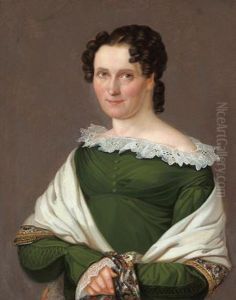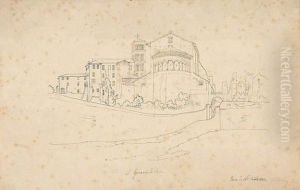Gustav Adolf Hennig Paintings
Gustav Adolf Hennig was a notable German artist, born in 1797 and passing away in 1869. His life and career were set against the backdrop of a Europe that was undergoing significant political, social, and cultural transformations. Hennig's work is often reflective of the Romantic movement that swept through the continent during his lifetime, embodying the movement's fascination with nature, emotion, and individualism.
Hennig received his artistic training at the prestigious Dresden Academy of Fine Arts, where he honed his skills in drawing and painting. This education provided him with a strong foundation in the classical techniques of art, which he would later adapt to fit his own unique style. Throughout his career, Hennig was known for his portraits, landscapes, and genre scenes, demonstrating a versatility that allowed him to capture a wide range of subjects with sensitivity and depth.
Despite his talent, Hennig never achieved the same level of fame as some of his contemporaries. Nevertheless, his work was appreciated by those who knew it for its emotional depth and technical proficiency. Today, Hennig's paintings can be found in various museums and collections across Germany and beyond, where they continue to be studied and admired for their contribution to the Romantic era of art.
Hennig's legacy is that of a skilled artist who was able to capture the spirit of his time through his work. His paintings, characterized by their vivid detail and emotional resonance, offer a window into the world of 19th-century Germany. Hennig remains an important figure for scholars and enthusiasts of German Romantic art, representing a bridge between the classical traditions of the past and the burgeoning modern artistic expressions of his time.

